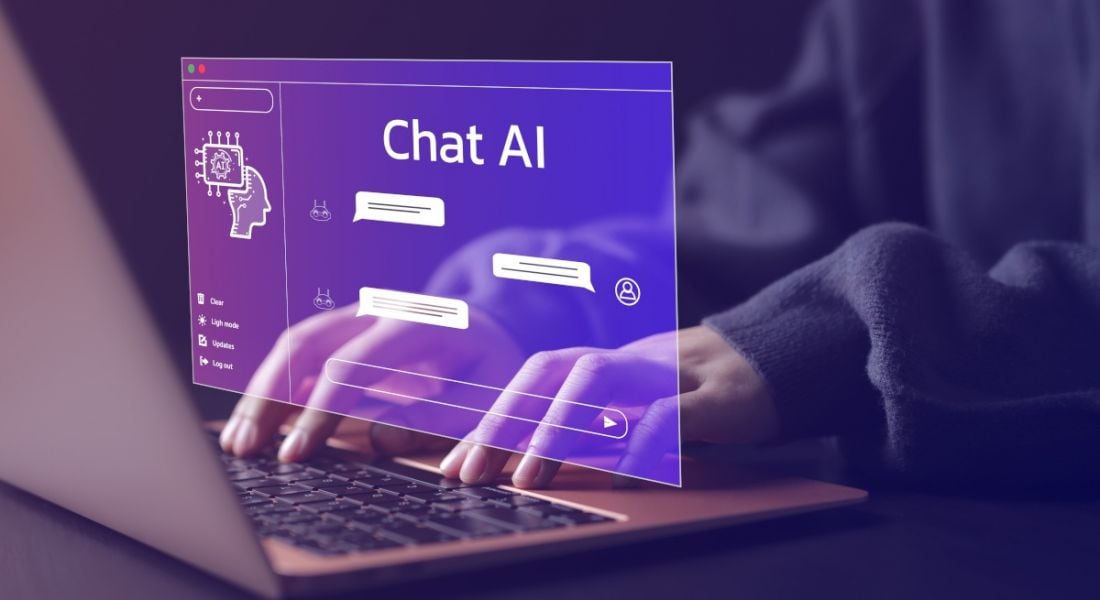Marketing executive Rebecca Barnatt-Smith gives an insight into how ChatGPT’s generative AI capabilities can help you build a website quickly and effectively.
ChatGPT is transforming almost every industry today as we know it. This is unlikely to come as a surprise due to the long list of skills the artificial intelligence (AI)-powered chatbot has, and its impressive repertoire includes the ability to assist you in building a website for your business.
Quickly and in a human-like tone, ChatGPT can answer a user’s question and use prompts to assist with tasks, such as writing essays or creating apps, charts and tables.
The question is, can it also be used to build a website?
With more than 180m users, ChatGPT has now expanded to the UX design industry. With the ability to write code as well as create content on the spot, it’s no surprise that emerging website designers are using AI-powered tools to optimise their website design and SEO.
With this in mind, let’s delve into some of the ways you can use ChatGPT to enhance your own website building in 2024.
What ChatGPT can’t do
Luckily for web developers, there are some tasks that ChatGPT can’t do because it is limited to generating written content. This includes:
- Executing code – it can only write code.
- Managing content – you need a content management system (CMS) for this.
- Uploading files to a web host – you must do this manually on your chosen web hosting provider.
However, with such vast capabilities when it comes to generating content in just a few seconds, many UX designers are using ChatGPT to enhance their site-building efforts and take care of repetitive tasks such as translation and repeat copywriting.
If you’re using ChatGPT to improve your website building, you’ll likely want to utilise the AI bot for your content efforts. However, there are plenty more ways to use ChatGPT to your advantage when it comes to site design, coding and suggestions.
Here are four ways to use ChatGPT to help you build and edit a website.
Copywriting
ChatGPT can generate written content that will assist in selling your products or services, such as product descriptions, social media posts and campaigns, and landing page copy.
In addition, the chatbot can also generate blog articles related to your niche. When you upload this AI-written content to your website, you can add links to take consumers to your products and services, which generates more leads and attracts new customers.
Here is an example of ChatGPT creating a blog post for a specific niche after I prompted: “Write a blog post for my online pet store”.
Image: Rebecca Barnatt-Smith
ChatGPT has powerful copywriting skills, but always remember to proofread AI-generated content. ChatGPT- creator OpenAI has warned: “ChatGPT sometimes writes plausible-sounding but incorrect or nonsensical answers.”
Suggestions
ChatGPT can suggest what web pages you should include on your website and what should be on each of them based on your business.
Start by asking ChatGPT to create a website menu or navigation menu. From there, you can choose which pages you want on your website. Then, the chatbot can assist you by breaking down what content should be included in each section of your website.
For this part of the web-building process, your prompts could look like: “Create a website menu for an online shoe shop” or “What shall I include in the Contact Us page of my website?”.
In addition, ChatGPT can suggest hosting platforms, business names, domain names and new product ideas. However, these are just suggestions, as the chatbot can’t complete tasks that require you to sign up to another website or pay money.
Here is an example of ChatGPT offering some new product ideas relevant to the niche after I prompted: “What are some new product ideas for my pet store?”.
Image: Rebecca Barnatt-Smith
Coding
While it’s not specifically designed to write code, ChatGPT uses machine learning (ML) algorithms to generate semantic HTML and CSS code, JavaScript functions and a range of other web development tasks.
Firstly, you need to specify the programming or code language you want ChatGPT to generate code for, such as Python, Javascript or Java.
Next, prompt ChatGPT with a description of the code you want to generate and include the desired functionality of the code snippet.
Finally, Chat GPT will generate a code snippet matching the description, which you can paste into your website.
Here is an example of ChatGPT writing in JavaScript after I wrote: “Write a JavaScript function. It accepts a full name as input and returns avatar letters”.
Image: Rebecca Barnatt-Smith
Translation
ChatGPT has been trained to understand and support almost a hundred languages, including Chinese, German, French, Greek, Russian and Arabic.
ChatGPT uses the latest neural machine translation technology to translate text from one language. This makes it a powerful tool for breaking language barriers and attracting a global audience to your website.
Here’s how to take advantage of ChatGPT for language translation:
- Provide context – ChatGPT can translate text depending on the context you provide so that the translation reflects the speaker’s intention. For example, “translate [text] to German from the perspective of a medical professional” – this will use appropriate medical terms.
- Provide text type – ChatGPT can translate text depending on the text type you provide so that the meaning isn’t lost. For example, “[text]. Translate this slang in English to French” – this would use French slang with the same meaning rather than an exact translation.
- Use style transfer – ChatGPT can copy the tone and style of the text in the translation, so it is not too technical or inappropriate for the target audience. For example, “translate [text] into Russian for a young audience” – this will use child-friendly language.
- Use summaries – If you are trying to understand the message of a long piece of text written in another language, you don’t need to translate it all, as ChatGPT can make a summarised translation when prompted. For example, “provide a summarised translation of [text] to English”.
Here is an example of ChatGPT translating the meaning of some British slang to French after I prompted: “Chinwag. Translate this slang in English to French”.
Image: Rebecca Barnatt-Smith
Wrapping up
AI and ChatGPT are no longer buzzwords. They are part of everyday life and have become valuable tools that we can access directly from our smartphones.
When AI-powered chatbots first came on the scene, many feared that robots and technology would replace them in the workplace. However, web developers, designers and business owners should embrace ChatGPT’s many skills to enhance their AI website-building strategy.
Rebecca Barnatt-Smith is a freelance content writer and multimedia marketing executive at Solvid Digital, specialising in social media trends and widespread digitalisation in the marketing sector.
Find out how emerging tech trends are transforming tomorrow with our new podcast, Future Human: The Series. Listen now on Spotify, on Apple or wherever you get your podcasts.




